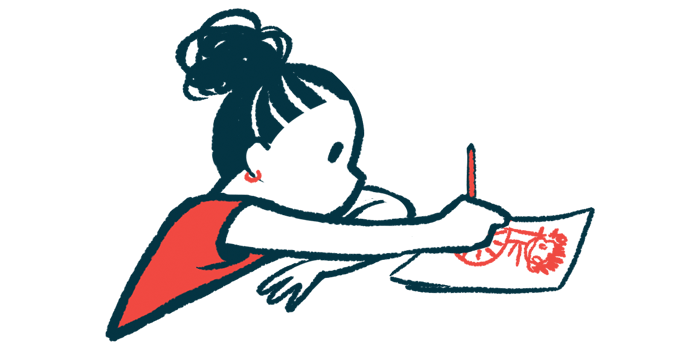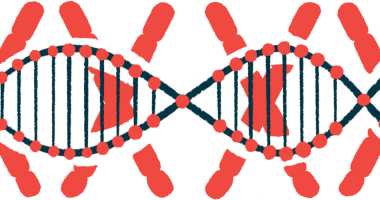Zolgensma Safe in Children Heavier Than Those in Trials, Data Show

Zolgensma appears generally safe and well tolerated among spinal muscular atrophy (SMA) patients weighing 8.5 kilograms (about 18.7 lbs) or more, with no new safety concerns identified in the heavier group. Notably, 8.5 kilograms was the maximum weight of SMA patients enrolled in clinical trials supporting Zolgensma’s approval.
These were the findings of an analysis of real-world data from the Global Managed Access Program (GMAP), launched in 2020 by the therapy’s developer, Novartis Gene Therapies, to make Zolgensma (onasemnogene abeparvovec-xioi) available to eligible patients in countries where it was not yet approved.
The study, “Safety of Onasemnogene Abeparvovec for Spinal Muscular Atrophy Patients Heavier than 8.5 kg in a Global Managed Access Program,” was published in the journal Pediatric Neurology.
Administered directly into the bloodstream at a dose proportional to a patient’s body weight, Zolgensma uses a modified and harmless virus to deliver to cells a working copy of SMN1, the mutated gene in SMA. The gene therapy can be given only once due to the body’s natural production of immune antibodies against its viral carrier.
However, patients still may develop immune reactions after the single dose, which can increase the levels of liver enzymes — an indicator of liver damage — and troponin I protein, which can indicate heart damage. It can also drop the levels of platelets.
For that reason, an immunosuppressive regimen is started on the day before treatment and continued for 30 days. In addition, liver health, troponin I levels, and platelet counts are monitored before treatment and at regular periods thereafter for at least three months.
Notably, while the therapy is available to SMA patients up to age 2 in the U.S. and other countries, and those weighing up to 21 kg (about 46 lbs) — likely including children up to age 5 — in the European Union and Canada, Zolgensma’s clinical trials mostly involved infants weighing up to 8.5 kg.
Safety concerns due to these broader labels exist for older and heavier patients, as higher doses with higher number of viral carriers can lead to more pronounced side effects.
With this in mind, Novartis Gene Therapies launched the global Phase 3b SMART trial (NCT04851873) to test Zolgensma in up to 24 children with SMA symptoms and weighing 8.5 to 21 kg (about 18 to 46 lbs). The study is expected to conclude in August 2023. Information on recruiting sites can be found here.
As such, real-world data on Zolgensma’s use in heavier SMA patients are key to better understanding the therapy’s safety profile across its approved patient population.
Now, researchers at Novartis Gene Therapies described safety findings from 102 children with SMA who weighed at least 8.5 kg at the time of Zolgensma dosing between January 2020 and September 2021 within the company’s GMAP.
The GMAP includes SMA patients under age 2 and who do not have access to or are not medically eligible for available disease-modifying therapies. GMAP patient records were matched to adverse event reports within the Novartis ARGUS safety database (an adverse event management system used for routine data monitoring).
Results showed that a total of 368 adverse events were reported in 54 (53%) patients, and most (62%) were not serious. The most frequently reported adverse events included increases in liver enzymes, platelet reductions, lower-than-normal platelet counts (thrombocytopenia), fever, vomiting, and reduced appetite.
In addition, two of the five (40%) patients weighing 13.5 kg (about 29.8 lbs) or more at the time of Zolgensma infusion (range, 13.5–17 kg, or 37.5 lbs) experienced adverse events, such as vomiting, signs of liver toxicity (without acute liver failure), and thrombocytopenia.
These were “consistent with the reported safety profile of [Zolgensma], without identification of any new safety signals,” the researchers wrote.
Regarding Zolgensma’s known safety risks, liver toxicity events were reported in 46 (45%) patients, but there were no reports of liver failure — an event added late last year to the list of safety concerns with Zolgensma use.
Given that liver toxicity events were reported for 89% of patients in previous Zolgensma’s trials, heavier children do not seem to be at a higher risk of liver toxicity events.
Reductions in platelet counts, including thrombocytopenia, were reported in 24 (23.5%) patients, with five of them also experiencing bleeding-related events.
There was one case of thrombotic microangiopathy (TMA), a rare condition characterized by blood abnormalities and that was added to the list of Zolgensma’s safety concerns early last year. This event was resolved within one month. As of July 31, a total of nine cases were reported in more than 1,400 treated patients.
“The GMAP data for TMA remain consistent with that already described for TMA, which is a treatable condition if diagnosed early,” the team wrote.
In addition, 11 (10.8%) patients experienced heart-related events that were mainly secondary to respiratory problems or infections. There were four events of increased troponin I levels, which were not associated with relevant signs of symptoms.
Three deaths were reported in the GMAP, and all were deemed unrelated to treatment and secondary to SMA-associated breathing problems.
These results highlighted that the safety findings for patients dosed at a heavier weight “are consistent with those described in clinical trials” and “included [liver toxicity], thrombotic microangiopathy, and thrombocytopenia,” the researchers wrote.
As such, “risk of increased toxicity in the heavier population was not identified from this analysis,” they added.
“Children with SMA are fragile because of recurrent respiratory infections and malnutrition, and care should be optimized before, during, and after any therapy provided,” and “clinicians must still exercise a greater degree of awareness to identify [adverse events] early, if they occur, and intervene accordingly,” the team wrote.







